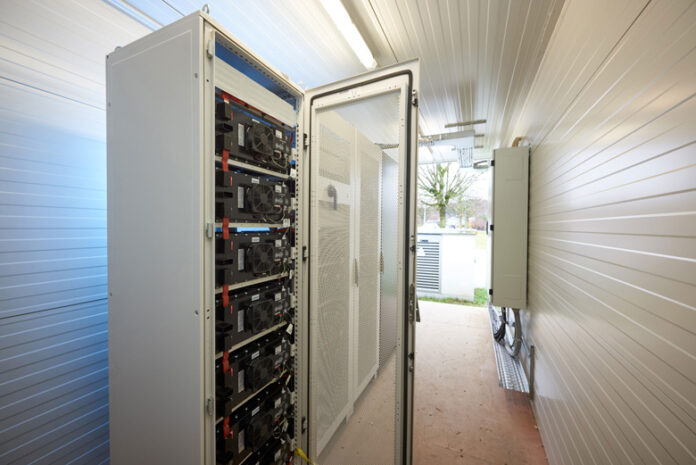The expansion of storage capacity is one of the most important levers in the implementation and acceleration of the energy transition. Energy experts agreed on this even before the current energy crisis. The exploding energy prices as well as supply bottlenecks and the fear of blackouts have fueled interest in storage applications even more. Even in areas of application where decision-makers were previously reluctant, it is now clear how quickly the investments will pay off. Battery storage expert BYD and EFT-Systems, official EU partner for BYD Battery-Box and C&I systems, summarize which application areas are currently particularly attractive and which storage functions offer important advantages. The specific examples come from the German market, but the trends also apply to many other regions.
Optimization of self-consumption and energy independency
PV self-consumption optimization is one of the most relevant and attractive fields of application for battery storage. “With the expected cost reductions, investing in a PV battery storage system can be worthwhile for a large number of households if it can significantly increase the degree of self-consumption,” confirms a recent BMWi report. Consumers have recognized this, which has led to strong growth in the residential market. In the course of the energy crisis, the advantages are becoming even clearer: the investment costs are amortized faster and at the same time, there is a growing desire for independence from the energy market and for stable energy costs and a secure energy supply, or at least for backup in the event of energy bottlenecks. Additionally, in the current situation, electric vehicles are by far most profitable, if you generate the electricity yourself and recharge the EV at home.
Businesses recognizes the potential of commercial Application
According to the Agency for Renewable Energies, only 13.2 percent of the installed system capacity from renewable energies was in the area of commercial operators in 2021. Even if commercial decision-makers have been rather cautious so far, interest has increased significantly in recent months, as more and more decision-makers recognize the high potential for savings and decarbonization. In addition to self-consumption optimization, commercial storage can be used to stabilize the power required from the grid and thus avoid peak loads, or to provide emergency power in the event of a grid failure.
Peak-shaving for price spikes
A commercial electricity bill consists of energy-related and performance-related costs. The costs for the service refer to the maximum service in the billing period. This means that a brief power peak can already cause high costs for the entire year. The service prices can also depend high-load and low-load time windows. With price-peak avoidance or peak shaving in the high-load time window, commercial storage is used precisely in these high-load time windows. At a wholesale store in Borna, Germany, for example, the 260 kWh BYD Battery-Box Commercial C130 commercial storage system, which is coupled to a 200 kVA PV system, is used for a few hours a day to reduce the commercial customer’s electricity bill. In the high-load time window, the storage system manages to reduce the power drawn by around 70 kW. With a performance price of ca. 170 €/kW, this leads to high annual cost savings.
Demand peak shaving
Peak shaving can also be economically interesting without a high-load time windows. If the power price is above 100 €/kW, this option should always be checked. If there are sharp peak loads or load profiles that can be planned, the installation of a commercial storage system can be economically interesting and help to reduce the high cost-pressure. Some companies have the option of coordinating and thus reducing the power requirement on the consumption side, for example by using an energy management system (EMS). This option does not exist for others, since the processes specify the performance requirements.
Load management and EV charging infrastructure
The performance of the energy network is limited. Due to the conversion of the energy system to renewable resources and towards a more electricity-based energy system, the demand is increasing. This results in costs and in some cases, it is not possible or sensible to adapt the power of the network to the ad-hoc demand. Especially infrastructure projects for EV and charging on company premises can massively increase the required connected load.
Hotels and car dealerships are often confronted with this problem. Customer and corporate expectations call for the rapid installation of charging stations. During the planning, it often turns out that the permissible connected load at the transformer station cannot be further increased. Load management for the charging infrastructure can then regulate the charging park in a targeted manner. To avoid times in which charging is not possible, a commercial storage system can help. This can be charged with low power over a long period of time and, if an e-vehicle needs to be charged, it can be supplied with high power.
High savings potential in agriculture applications
Problems caused in the agricultural sector are often forgotten when considering the current development of energy prices. Operating agricultural machinery and caring for livestock is energy intensive. A dairy cow needs to be warm and milked regularly in the mornings and evenings, causing peaks in the load profile during these times. A study by the HTW Berlin was able to show that there is great potential for savings in the agricultural sector in particular by operating a self-consumption storage system connected to a pv system.
Essential storage features for commercial applications
A high degree of flexibility in use is expected from commercial storage systems even more than in the residential sector. The storage system is only one component in the energy system of the future and must be able to be flexibly adapted to it.
- Peak shaving applications require rapid performance and high C rates.
- Open and flexible: The commercial storage system must also be able to communicate easily with the other components in the energy system – as independently as possible of the manufacturer and as flexibly as possible.
- EMS integration: The sector coupling of electricity, heat and mobility requires cross-plant communication. The integration into various energy management systems will therefore be a mandatory exercise for commercial storage in the future.
- Flexibility in power electronics – inverters: in the international market local requirements (network codes) are added to power specification and functions such as emergency and backup-capabilities. A flexible in selecting a compatible inverter and a supplier with local support is very helpful.
“The high degree of flexibility in using the BYD Battery-Box and the possibility of combining it with various inverters has already been able to support the energy transition in the residential market,” explains Christian Bausch, commercial energy storage expert at EFT-Systems. “Due to the energy price development in the commercial sector, a similar need remerged in this market. The new commercial energy storage system Battery-Max Lite, combines the solution benefits of the residential market solution with the featured needed for the commercial market. Both capacity and performance are adjustable over a wide range. The flexibility in communication is given across systems with the Battery EMS interface. A wide selection of different, compatible inverters will allow a wide range of applications. The system can therefore be used in all of the scenarios presented and help to survive the energy crisis.”






